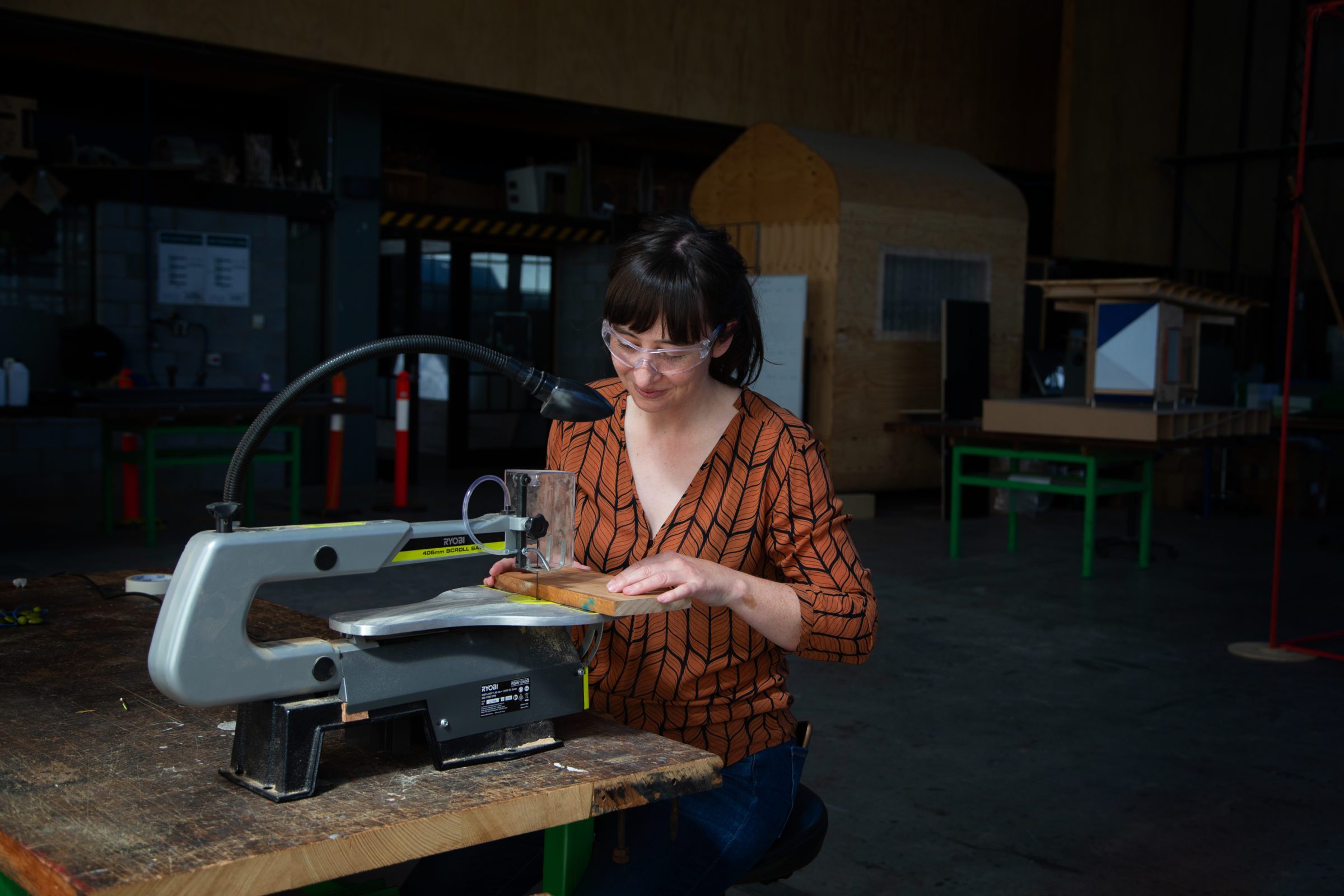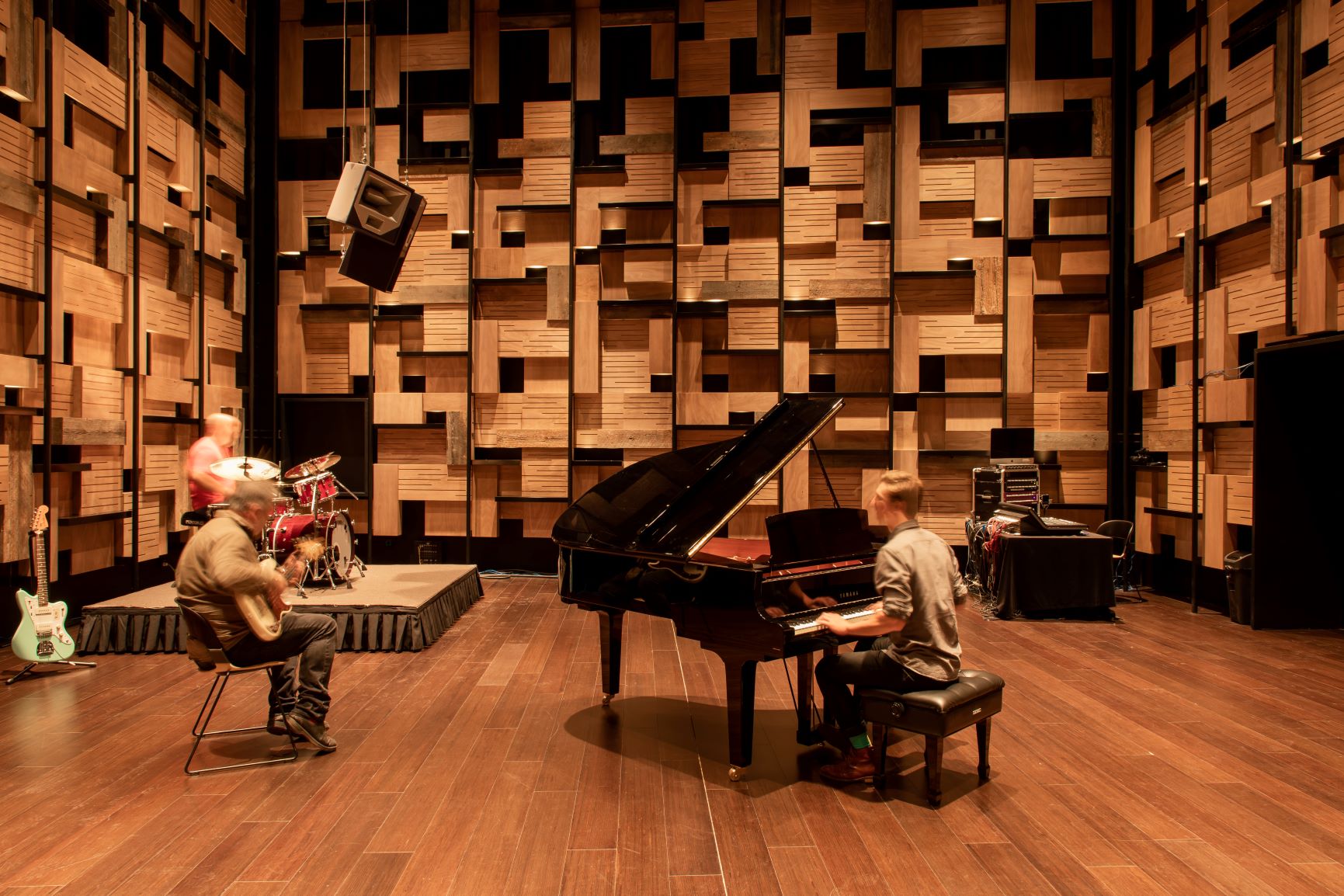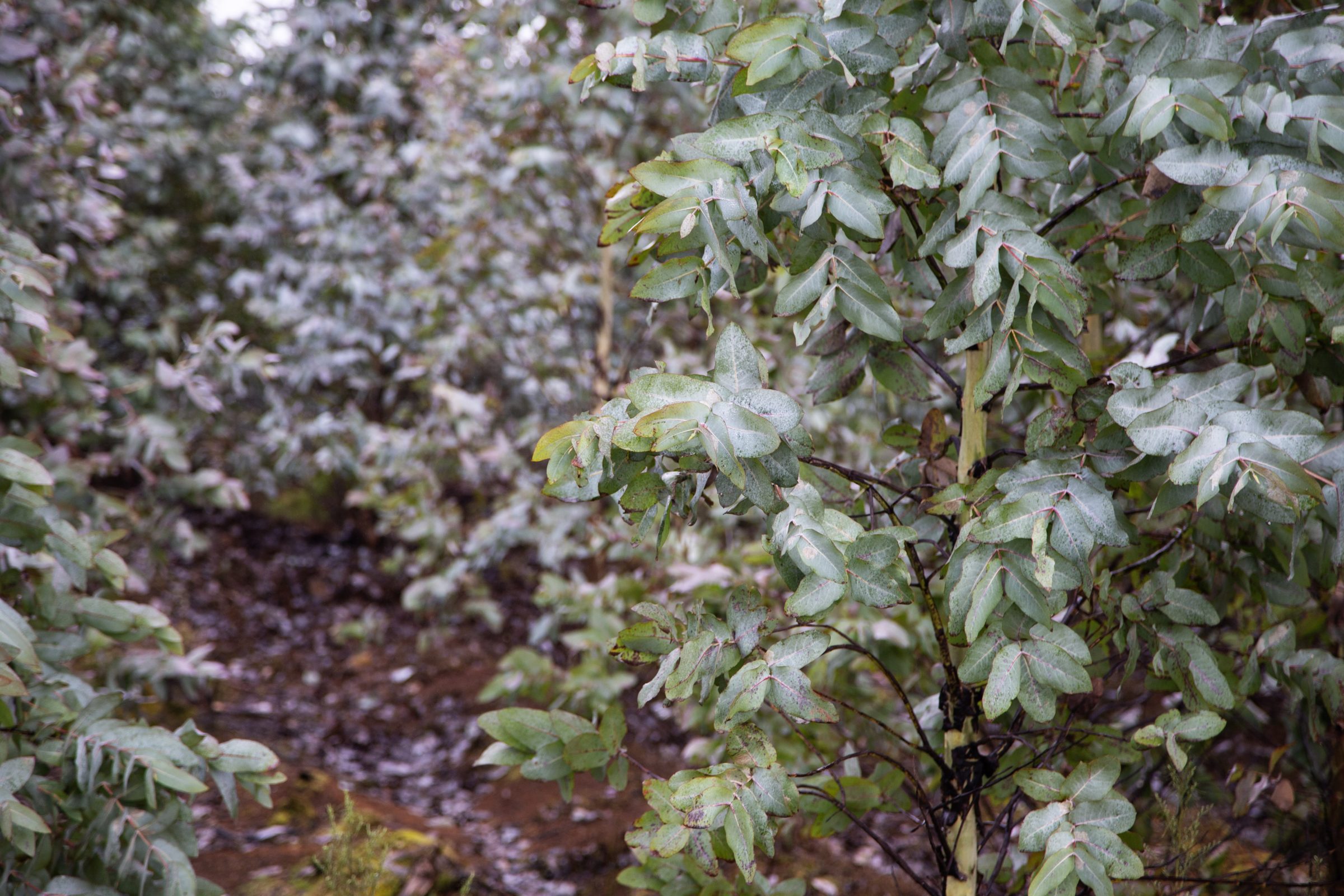
Minimising Waste
The Tasmanian Timber industry demonstrates its commitment to optimising value and minimising waste, in six ways.
- Maximising Recovery
- Research and development
- Product Innovation
- Educating the Marketplace
- Being Specification Experts
- Repurposing offcuts and short
Maximising Recovery
Maximising the high-value timber recovery from every log is the goal of timber production. From the time a plantation or coupe is harvested, the Tasmanian Timber industry uses their technical expertise and state of the art machinery to maximise recovery and minimise waste. By improving cutting accuracy and grading timber, companies strive to optimise value and have as little avoidable loss as possible. This respects the resource that has been skilfully grown for the purpose and ultimately makes the most economic sense.
Research and Development
The Tasmanian timber industry is continually investing in the research and development of new products and processing practices. Floor systems, different structural beams and studies into how to use timber in new, innovative ways. Materials that were previously overlooked are now studied and reworked to create new cutting-edge products. The industry has partnered with the University of Tasmania’s (UTAS) Centre for Sustainable Architecture with Wood (CSAW). CSAW is a technical research unit centred within the UTAS School of Architecture and Design working closely with the University’s School of Engineering. Amongst other things, CSAW works collaboratively with industry to improve processing practices to optimise product return and minimise loss.
The National Institute of Forest Products Innovation have previously funded projects in conjunction with CSAW, including: Sensing technology and digital tools to support decision-making in hardwood timber drying, Increasing the durability and other material characteristics of Tasmanian hardwoods, Developing a new generation of Tasmanian appearance hardwood products for in-state design and manufacturing, Developing laminated structural elements from fibre-managed plantation hardwood, Minimising market-limiting discolouration in appearance Tasmanian hardwood, New methods of reliably demonstrating species durability in commercially relevant timeframes and Managing timber’s moisture content in the supply chain, construction and in service.
A new funding initiative, the Australian Forest and Wood Innovations (AFWI) was launched in 2024. AFWI is a collaboration between the Australian Government and UTAS committed to advancing research and innovation in Australia’s forest and wood products industries.
Research is vital throughout the whole supply chain, from the harvesting and regeneration of native timber, to maximising the potential of previously under-utilised fibre grown planation resource. Research into the sustainability and carbon sequestration properties and the renewability of timber can be used by specifiers to educate their clients about this ultimate renewable resource.
Product Innovation
Product innovation also supports optimising value and minimising waste. For example, timber sliced into veneers has many design benefits, from offering a consistency of colour to repeating patterns with figured timber. Veneer also has the environmental benefit of stretching the available resource, getting the look of a species on a large scale from a small volume of material. By creating veneer products for the architectural market, timber processors are getting more square meters of product from every cubic meter of timber.
Timber engineered flooring is another example of product innovation. This is a multi-layered flooring product composed of a timber veneer layer sitting on a substrate. The top layer or wear surface is generally 1-5mm, with the substrate often made from lower grade timber. It is an excellent example of how timber innovation can give the customer a hardwood floor, while minimising the amount of high-grade timber used.
Glued laminated timber (Glulam) is another innovative production approach. Glulam is an engineered wood product manufactured by gluing together smaller pieces of timber into larger, more useful and more valuable sections. Glulam is commonly used for timber beams, bench tops and stair treads.
Educating the Marketplace
Consumer and specifier education is an important factor in optimising value and minimising waste. Instead of each piece of timber being consistent, like a manufactured product, customers and specifiers needs to be encouraged to embrace the variations that come from a natural product. Imperfections can bring interest. In the past, timber with a lot of natural feature was considered lower value for aesthetic reasons and was often underutilised despite having technically of the same physical quality as other piece. Today the marketplace is encouraged to view natural feature as an asset; a reflection of the season when the tree grew; the intersection of a branch with the trunk; or event in the life of the tree. It is a unique characteristic that can add meaning and character to a project instead of being discarded. Educating the consumer to highlight the natural variations of timber rather than excluding them is an important part of value optimisation and waste reduction in the industry.
Being Specification Experts
Specifiers should engage early with timber suppliers to find out the best way to specify timber for a particular outcome. If specifiers can be advised on set lengths or board width so much timber can be saved.
Repurposing Offcuts and Short
There will always be offcuts that in the past would have ended underutilised. Timber processors in Tasmania today are closing the loop to have minimal to zero waste in their businesses. Neville Smith Forest Products make wood fired pellets from sawdust for home heating. Britton Timbers are so vertically integrated to eliminate waste that the offcuts from the Britton Timber mill are used as boiler fuel for the local McCains potato factory, used to heat the local pool, and used to heat the greenhouses of the flower farms of the north west of Tasmania.
Optimising value and minimising waste is the responsibility of the whole supply chain
The processors of Tasmanian Timber are using the latest in innovation to optimise value and reduce waste, while working with the scientists at CSAW to research new ways to use timber. Architects, builders and home renovators need to partner with this process and be environmentally responsible and conscious consumers. They should ensure the optimum use of the timber resource by adjusting their perception about what the perfect piece of timber looks like and work and specify material that is within the bounds of what the resource actually produces. This way, all of the recoverable resource will find useful and attractive uses in our homes and other parts of the built environment.


















